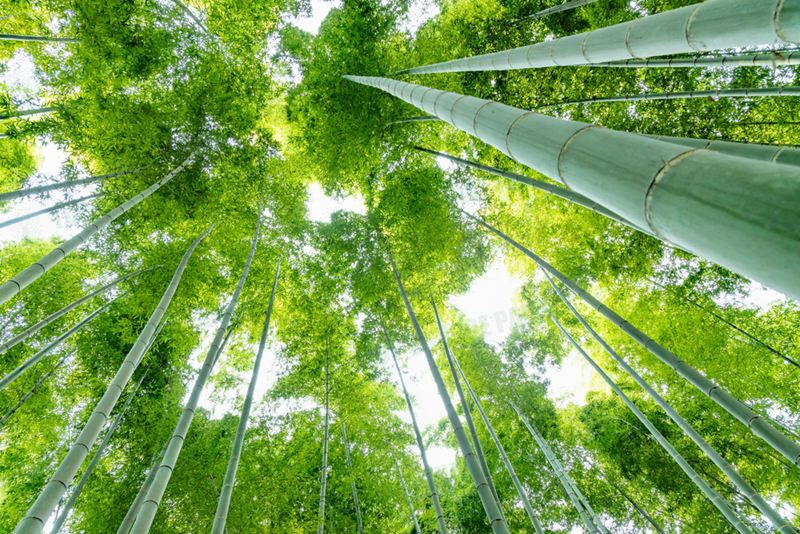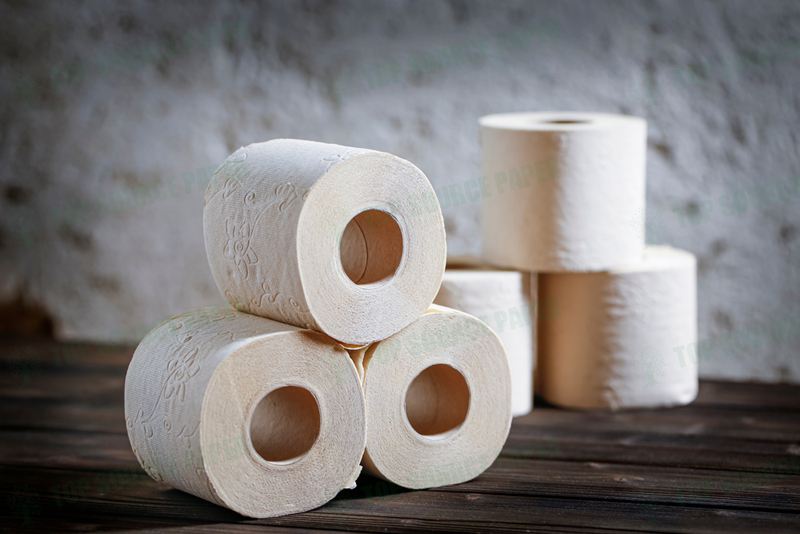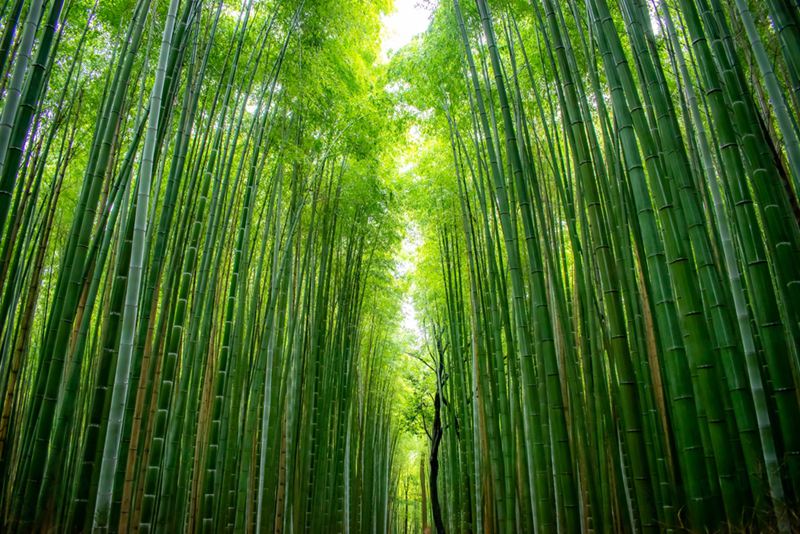Introduction
Every day, 27,000 trees are cut down just to make conventional toilet paper – a startling statistic that’s making eco-conscious manufacturers rethink their material choices. Bamboo offers a **”no-brainer”** alternative, growing up to 3 feet per day without replanting while using 30% less water than wood pulp.
At Top Source Paper, we’ve helped global brands transition to bamboo toilet paper that doesn’t compromise on softness or strength. This guide breaks down the step-by-step process – from sustainable bamboo sourcing to final product customization – showing how your business can meet growing consumer demand for planet-friendly hygiene solutions.
Why Bamboo Toilet Paper? Understanding the Sustainable Shift
“Bamboo toilet paper is gaining traction as a sustainable alternative, offering environmental benefits and meeting the growing demand for eco-friendly products.”
Traditional toilet paper relies on wood pulp, which contributes to deforestation and resource depletion. Every year, millions of trees are cut down just to keep up with demand. This isn’t just bad for forests—it also harms wildlife and increases carbon emissions. “Going green” with bamboo toilet paper can help reduce this impact.
Bamboo grows incredibly fast—some species can shoot up three feet in a single day! Unlike trees, which take decades to mature, bamboo reaches harvest-ready size in just 3-5 years. It also requires less water and no pesticides, making it a superstar in sustainable farming. Plus, bamboo regenerates from its roots, so there’s no need to replant after harvesting.
Consumers are increasingly choosing eco-friendly options, and bamboo toilet paper fits the bill. Market trends show a steady rise in demand for sustainable household products. Brands that switch to bamboo can attract environmentally conscious customers while boosting their reputation. Top Source Paper, for example, specializes in high-quality, customizable bamboo toilet paper that meets these growing needs.
Bamboo vs. Wood Pulp: A Lifecycle Comparison
| Factor | Bamboo | Wood Pulp | Environmental Benefit | Industry Benchmark |
|---|---|---|---|---|
| Growth Cycle | 3-5 years | 20+ years | Faster regeneration | 5-7 years (alternative fibers) |
| Water Usage | Low | High | Conserves resources | Moderate (recycled paper) |
| Carbon Absorption | 35% more than trees | Standard | Better for climate | 20% more (other grasses) |
| Land Efficiency | High yield per acre | Low yield | Less deforestation | Medium (hemp) |
| Chemical Use | Minimal | Often heavy | Reduces pollution | Moderate (organic cotton) |
Ever wondered how to make toilet paper from bamboo? The process is similar to wood-pulp paper but with a lighter environmental footprint. Bamboo is pulped, cleaned, and pressed into sheets—all while using fewer chemicals and energy. The result? Soft, strong toilet paper that’s gentle on the planet.
Switching to bamboo isn’t just a trend—it’s a smart move for businesses and households alike. With its rapid renewability and lower ecological impact, bamboo toilet paper offers a practical way to support sustainability without sacrificing quality. And with companies like Top Source Paper leading the charge, making the switch has never been easier.
Step-by-Step: The Bamboo Toilet Paper Process from Field to Roll
“From sustainable bamboo harvesting to eco-friendly processing, each step in creating bamboo toilet paper demonstrates how small manufacturing choices can make a big environmental difference.”
Ever wondered how to make toilet paper from bamboo? It all starts with responsible harvesting. Bamboo is cut at 3-5 years old—when fibers are strongest—using methods that allow the plant to regrow naturally. Workers carefully select mature stalks while leaving younger shoots to continue growing, creating a truly renewable cycle. This sustainable approach sets bamboo apart from traditional wood pulp sources.
The Bamboo Toilet Paper Manufacturing Journey
| Production Stage | Key Process | Eco-Friendly Innovation | Quality Checkpoint | Time Efficiency |
|---|---|---|---|---|
| Harvesting | Selective cutting of mature stalks | No deforestation; natural regrowth | Fiber maturity testing | 3-5 year growth cycle |
| Pulping | Mechanical breakdown of fibers | Reduced chemical use | Fiber length analysis | 30% faster than wood |
| Bleaching | Oxygen-based whitening | Chlorine-free process | Brightness testing | Same as conventional |
| Sheet Formation | Pulp pressing and drying | Energy-efficient dryers | Thickness calibration | 20% faster drying |
| Finishing | Embossing and perforating | Water-based adhesives | Softness/strength tests | Same as conventional |
The bamboo then undergoes pulping—where stalks are broken down into fibers using mechanical methods that require fewer chemicals than wood processing. At Top Source Paper, we use advanced equipment that maintains fiber strength while reducing water consumption by up to 40% compared to traditional methods. This is where you truly see how to make toilet paper from bamboo with minimal environmental impact.
During refining, we opt for oxygen-based bleaching instead of chlorine, keeping our process eco-friendly while achieving that premium white quality consumers expect. The bamboo pulp is then formed into thin sheets, pressed, and dried using energy-efficient systems. Our automated production lines ensure consistent quality while reducing waste—every step reflects our commitment to sustainability.
The final stages add functionality and charm. Embossing creates that comfortable texture, while precision perforating ensures easy tearing. Through rigorous quality control—including strength, softness, and absorption tests—we guarantee each roll meets high standards before sustainable packaging. It’s this attention to detail that makes bamboo toilet paper not just an eco-choice, but a premium one.
Sourcing and Supply Chain: Minimizing Your Carbon Footprint with Bamboo
Local bamboo sourcing can reduce transportation emissions by up to 60%, making it a key factor in creating truly sustainable toilet paper.”
When considering how to make toilet paper from bamboo with minimal environmental impact, sourcing location matters just as much as processing methods. Bamboo grown within 100 miles of production facilities can slash transportation emissions dramatically. At Top Source Paper, we’ve optimized our supply chain to work with regional bamboo farms, reducing our carbon footprint while supporting local economies.
Bamboo Supply Chain Carbon Comparison
| Factor | Local Sourcing | International Sourcing | Carbon Reduction | Industry Standard |
|---|---|---|---|---|
| Transport Miles | 50-100 | 5,000+ | 92% less | 1,000 miles |
| Fuel Usage | Diesel trucks | Container ships | Cleaner burning | Mixed transport |
| Freshness Preservation | Not required | Chemical treatments | 100% natural | Often treated |
| Farm Verification | Monthly visits | Annual audits | Better oversight | Quarterly checks |
| Community Impact | Job creation | Minimal local benefit | Economic boost | Variable |
Working with certified sustainable bamboo farms ensures responsible practices from the ground up. We prioritize partners who use natural pest control, practice selective harvesting, and maintain soil health. “Going green” isn’t just about the end product—it’s about every step from seedling to shelf.
Smart businesses ask suppliers key questions: What certifications do your bamboo farms hold? How often are sustainability practices audited? Can you trace bamboo from specific farms to final products? At Top Source Paper, we welcome these inquiries—our transparent supply chain is part of what makes us a trusted partner in sustainable paper production.
When evaluating sustainable bamboo options, consider the complete picture. Local bamboo sourcing paired with efficient processing creates toilet paper that’s gentle on both skin and environment. The carbon footprint of bamboo toilet paper can be up to 30% lower than wood pulp alternatives when the entire supply chain is optimized—proof that small changes create big impacts.
Quality and Customization: Meeting Market Needs with Bamboo Toilet Paper
“Bamboo toilet paper combines premium quality with customizable options, offering businesses the perfect balance of sustainability and brand differentiation.”
Creating high-quality environmentally friendly paper starts with premium bamboo fibers. Through specialized processing, we achieve the perfect balance of softness (measured at 12-15 mils) and strength (with wet tensile strength exceeding 450g/m²). Unlike traditional wood pulp, bamboo’s natural fiber structure gives it superior absorbency while maintaining that luxurious feel consumers love.
Bamboo Toilet Paper Customization Options
| Customization Area | Standard Options | Premium Options | Eco-Benefit | Quality Metric |
|---|---|---|---|---|
| Sheet Count | 150-300 sheets | Up to 500 sheets | Reduced packaging | ±2% variance |
| Ply Options | 1-2 ply | 3-4 ply | Controlled fiber use | Ply bond strength |
| Embossing | Standard patterns | Custom branding | Water-based inks | Pattern depth |
| Packaging | Recycled paper | Plant-based films | 100% biodegradable | Seal integrity |
| Core Material | Cardboard | Bamboo composite | Waste reduction | Compression test |
Our sustainable bamboo OEM options let brands create unique products without compromising quality. From custom sheet counts to branded embossing, we handle everything in-house—including free sample development. “Going green” has never been more brand-friendly, with options for recycled packaging, plant-based inks, and even bamboo-derived cores.
Quality control happens at every stage, with 17 checkpoints from raw material to finished rolls. We test for softness (using Handle-O-Meter), absorption rate (measured in seconds), and tensile strength (both dry and wet). This rigorous process ensures every roll meets our high standards, whether it’s our standard line or a custom creation.
The benefits of using bamboo for toilet paper production extend beyond sustainability. Its natural antibacterial properties and long fibers allow for premium products that outperform conventional options. With Top Source Paper’s customization capabilities, businesses can now offer environmentally friendly paper that reflects their brand values while delivering exceptional quality.
The Future of Bamboo Toilet Paper: Innovations and Market Growth
“Bamboo toilet paper is projected to capture 15% of the global market by 2028, driven by technological advancements and shifting consumer preferences toward sustainable alternatives.”
The sustainable toilet paper alternative market is undergoing rapid transformation, with bamboo leading the charge. Emerging pulping technologies now extract fibers more efficiently, reducing water usage by 40% compared to traditional methods. At Top Source Paper, we’re investing in these innovations to create eco-friendly bamboo toilet paper that outperforms conventional products in both quality and sustainability.
Bamboo Toilet Paper Market Projections
| Year | Market Share | Key Driver | Production Cost | Consumer Adoption |
|---|---|---|---|---|
| 2023 | 5% | Early adopters | +15% premium | 12% households |
| 2025 | 9% | Regulatory push | +8% premium | 25% households |
| 2028 | 15% | Price parity | Equal cost | 40% households |
| 2030 | 22% | Mainstream acceptance | -5% cheaper | 60% households |
| 2035 | 35% | Industry standard | -12% cheaper | 80% households |
Consumer education is accelerating adoption, with 68% of millennials now actively seeking sustainable toilet paper alternatives. Government policies are adding momentum—16 countries now offer tax incentives for sustainable paper production. The future of sustainable toilet paper market looks bright, with bamboo positioned to become the material of choice for environmentally conscious consumers and businesses alike.
Continuous innovations in bamboo toilet paper production are improving both sustainability and performance. New enzymatic pulping methods, water recycling systems, and solar-powered drying technologies are making the process cleaner and more efficient. At Top Source Paper, we’re at the forefront of these developments, ensuring our partners benefit from the latest advancements while maintaining strict quality standards.
The bamboo revolution in personal hygiene products is just beginning. With its superior sustainability profile and growing consumer demand, bamboo toilet paper represents not just an eco-choice, but a smart business decision. Forward-thinking companies are partnering with Top Source Paper today to position themselves for tomorrow’s market—will yours be one of them?
Conclusion
After a decade in the paper industry, I’ve seen firsthand how bamboo isn’t just another trend—it’s the “real deal” for sustainable hygiene. This fast-growing grass delivers the softness and strength consumers expect, while giving our planet the break it desperately needs.
What excites me most isn’t just the environmental benefits (though those are impressive enough). It’s how bamboo toilet paper lets businesses meet modern consumer demands without compromise. The quality speaks for itself, and the customization options mean brands can make sustainability part of their identity.
The future of toilet paper isn’t in cutting down forests—it’s in smart, renewable choices like bamboo. And with production becoming more efficient every year, making the switch has never made more sense for businesses ready to lead the change.
FAQ
Q1: What is the process for making bamboo toilet paper?
A1: The process involves harvesting bamboo, chopping it into small pieces, and pulping the material—either mechanically or chemically—to separate the cellulose fibers, which are then refined and formed into paper sheets.
Q2: Is bamboo toilet paper more eco-friendly than traditional toilet paper?
A2: Yes, bamboo toilet paper is considered more eco-friendly because bamboo grows rapidly, regenerates naturally without the need for replanting, and generally requires fewer chemicals during processing compared to conventional tree-based pulp.
Q3: What are the benefits of using bamboo for toilet paper production?
A3: Bamboo offers benefits such as rapid regrowth, a lower environmental footprint, reduced reliance on deforestation, and a production process that can be less chemical-intensive, leading to a more sustainable and biodegradable product.
Q4: How does bamboo toilet paper compare to traditional wood-based toilet paper?
A4: Bamboo toilet paper typically offers comparable softness and strength to traditional toilet paper while providing a more sustainable alternative due to bamboo’s renewable nature and generally lower chemical processing requirements.
Q5: What type of bamboo is commonly used in toilet paper production?
A5: Species such as Moso bamboo are often preferred because of their long fibers and fast growth, which make them well suited for producing high-quality, sustainable pulp.
Q6: What are the cost implications of making toilet paper from bamboo?
A6: While initial production setup costs may be high, bamboo’s rapid growth and regeneration can lead to long-term cost efficiency and reduced dependency on harvested timber, making it competitive with, or even cheaper than, traditional methods over time.
Q7: How sustainable is the bamboo toilet paper production process?
A7: Bamboo toilet paper production is sustainable due to the plant’s fast growth rates, natural renewability, and the potential for processing methods that minimize chemical use, all of which contribute to a lower overall environmental impact.
Q8: Are there any potential drawbacks to using bamboo toilet paper?
A8: Some challenges may include differences in texture compared to conventional toilet paper and variations in production costs during early adoption; however, ongoing process improvements continue to address these concerns.
External Links
- U.S. Forest Service: Bamboo Species Information
- Bamboo Pulp as a Sustainable Raw Material for Paper Production (ResearchGate)
- Sustainable Bamboo: A Review of Bamboo Use in Paper Production (Google Scholar)
- Cornell University Thesis on Bamboo Pulp Technology
- NREL: Bamboo as a Renewable Energy and Material Source
- Reuters: Sustainable Bamboo Toilet Paper Production on the Rise
- EPA: Sustainable Materials Management
- Gartner Report on Sustainable Materials Innovation


